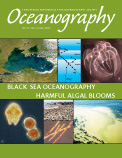First Paragraph
Harmful algal blooms (HABs) are growing in frequency around the world and their effects are being recognized by ecosystems managers, scientists, and the public alike. From the serious threat to public health created by seafood tainted with algal toxins; to human respiratory and skin irritations from exposure to aerosols along beaches with red tides; to headlines of stranded whales, manatees, and dolphins; to economically devastating fish kills, these events are serious threats to the viability of our coastal systems. While it is certainly true that scientists have developed new tools for monitoring such events—and have been able to recognize new events that previously were undetectable, not all of the “new” awareness is due to new and better science. Indeed, there are more HAB events, more often, and of longer duration than decades ago. Human activities have been contributing to the problem through increased nutrient inputs, through the translocation of harmful species, through human-induced climate change, and through overfishing. Recent reports such as that produced by the U.S. Commission on Ocean Policy have recognized that the coasts are in peril and will require a new approach to their management in the future (report is available online at http://www.oceancommission.gov). Efforts to build an Integrated Ocean Observing System are underway (see http://www.ocean.us for more information) and will be central in the continued effort to understand HABs and to determine the importance of factors such as eutrophication on their development, and to build operational models and forecasts.

